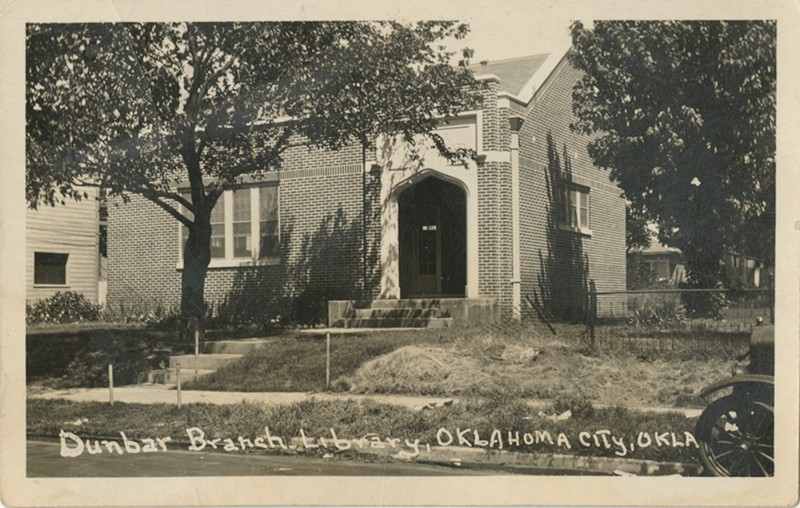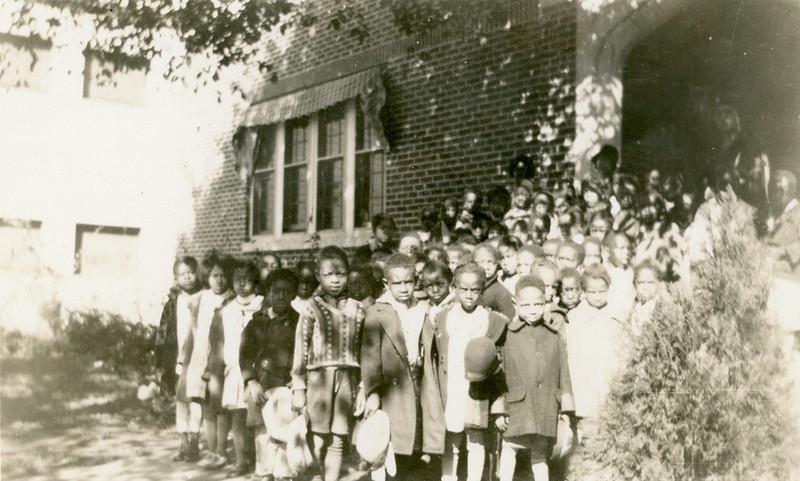Dunbar Public Library
Introduction
Text-to-speech Audio
After the Oklahoma City Carnegie Library excluded Black residents in 1921, a library for Black residents was located in a storefront in the Slaughter Building on East Second. But in 1926 the Library Board built a new small building at 609 E 4 next door to the Brockway House community center at 615. Ralph Ellison was a frequent visitor to the library where he read everything he could get his hands on. The building was demolished during Urban Renewal in the late 1960s. Library service on the northeast side move further north and east and today the Ralph Ellison Library serves the area.
Images
Dunbar Library, 1920s

Dunbar Library Storytime, 1928

Backstory and Context
Text-to-speech Audio
At the end of 1921, Ralph Ellison gained access to a new and improved, though still segregated, library far-outshining the small store-front library in the Slaughter Building. The Dunbar Public Library was hastily constructed, likely to avoid a lawsuit in the vein of those brought to the courts by Black Dispatch owner and civil rights advocate, Roscoe Dunjee. The building had once contained a pool hall but transformed into a library and reading room under the direction of Miss Alphenia Young and Lillian E. Youngblood, its collection promised to challenge the likes of the young Ellison and his “Renaissance Men.” The Dunbar Library was mainly made up of second hand or cast of books from Oklahoma City’s original Carnegie Library, but it still contained such adult authors as Theodore Dreiser and Sinclair Lewis. Of his self-christened Renaissance Men (including, among others,Tracy and Willard McCleary, Frank Mead, Malcom and Lloyd Whitby, Hillard Bowen, and Harold Calicutt), Ellison later wrote, “Anything and everything was to be found in the chaos of Oklahoma; thus, the concept of the Renaissance Man has lurked long within the shadow of my past, and I shared it with at a half dozen of my Negro friends. How we actually acquired it I have never learned, and since there is no true sociology of the dispersion of ideas within the American democracy, I doubt I ever shall. Perhaps we breathed it in with the air of the Negro community of Oklahoma City, the capital of that state. Negroes were often charged by exasperated white Texans with not knowing their “place. Perhaps we took it defiantly from one of them. Or perhaps I myself picked it up from some transplanted New Englander whose shoes I had shined of a Saturday afternoon…Most likely, however my friends and I acquired the idea from some book or some idealistic Negro teacher, some dreamer seeking to function responsibly in an environment which at its most normal took on some of the mixed character of nightmare and of dream…Spurring us on in our controlled and benign madness was the voracious reading of which most of us were guilty.”
Sources
Callahan, John F.. Conner, Marc C.. The Selected Letters of Ralph Ellison. New York City, New York. Random House, 2019.
Ellison, Ralph. Shadow and Act. New York City, New York. Vintage, 1953.
Metropolitan Library System of Oklahoma County
